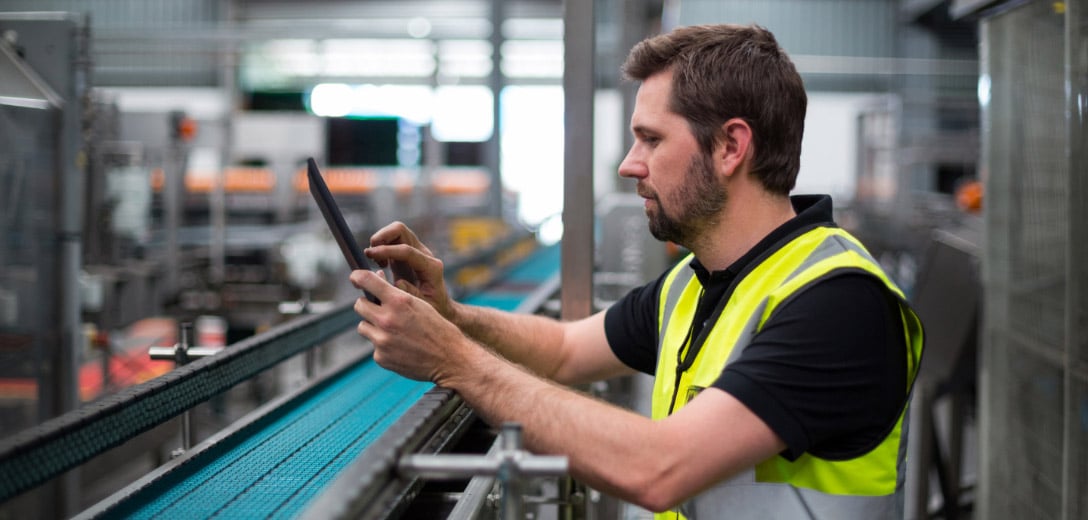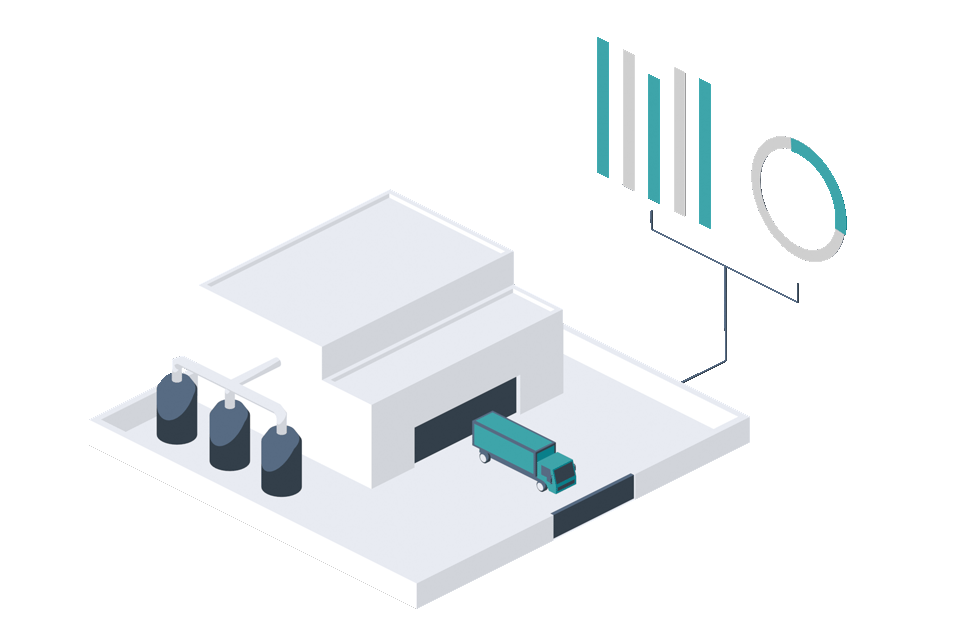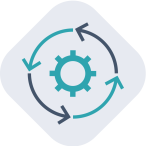
Today, big data and the availability of inexpensive sensors and actuators have helped in the rapid proliferation of IoT frameworks across manufacturing industries.
The many possibilities of IoT applications in factories promise to solve key challenges manufacturers face today. For instance, IoT-based systems can efficiently facilitate production flow, automatically monitor development cycles, and manage warehouses and inventories.
IoT systems ensure the effective use of data that would otherwise lie dormant. The insights and analytics extracted from these data sets can be used to effectively improve business outcomes.
It is estimated that investment in IoT devices will
grow to $15 trillion by 2025 as more industries
look to harness the benefits of an IoT Solution.
These sensors and actuators are used to collect data and drive artificial intelligence and predictive analytics. IIoT can be used to improve the manufacturing efficiency and quality of both a company’s product and production process.
The concept of IoT, if not the name, has been around since the early 1980s. Its first realworld device was reportedly a Coca Cola machine located at Carnegie Mellon University. The machine’s inventory could be accessed via the Internet to check if sodas were stocked and cold.
The actual term “Internet of Things” and IoT began to appear around 2008 to 2009. This was when more things than people were connected to the internet. Since then it has continued to expand in hundreds of new directions, particularly the industrial sector.
The economic viability of sensors and actuators along with the ever-widening bandwidth of the Internet sowed the first seeds of Industry 4.0.
Data from sensors is continually collected and interpreted with intelligent analytics to help managers make better decisions. The data from these sensors can help track and study trends that determine what is performing in optimal capacity, what is not, and what could be.
The insights gathered from these sensors can also be used to look for inconsistencies in products and processes along the assembly line, improving accuracy and reducing waste.
Manufacturing often involves high-risk work. Activities like brazing, welding, soldering, metal cutting, and rigging involve frequent exposure to radiation, gases, and magnetic fields. In fact, statistics show that workplace hazards lead to roughly 150 deaths per day in the United States alone.
Manufacturing firms have strict guidelines for safety. Workers are equipped with protective gear like helmet, goggles, and vests, depending on their jobs. IIoT wearables can supplement existing conventional protective equipment by improving worker visibility. Wearables can also monitor factors like posture, noise, fatigue, and physiological data. Features like fall detection alerts warn personnel about impending collisions. Data from these sensors are processed in a central repository where managers can get a clear understanding of factory floor safety.
The computer vision generated by these sensors can also detect and notify of any change in the optimal environment conditions. It can screen data collected by sensors to detect any anomalies on the factory floor as well as alert factory personnel when action needs to be taken to maintain a safe environment.
IIoT-enabled safety goggles can be equipped with augmented reality components. Wearers can get real-time feedback to see if they are complying with production practices. For example, an operator can reference visual aids for complex procedures. AR wearables can also help keep track of checklists or provide alerts for assistance. A voice recording feature can help personnel easily document an entire process
Cost reduction initiatives generally have multi-dimensional implications , and IoT implementation is no different. Manufacturing costs can be reduced in a number of ways. For instance, direct labor can be reduced by increasing in-process efficiency, while cost of quality can be brought down by a decrease in process variation. Similarly, the bottlenecks in processes are eliminated through line balancing, while uniform productivity and one-piece flow is improved by Load Leveling.
IoT platforms for manufacturing gather data to provide insights to engineers or operators, giving them enough lead time to take necessary actions. IoT in manufacturing can also help maximize production by offering data analysis and predictive maintenance to increase uptime, and avoiding downtime caused by parts failures and obsolescence.
Access your digital readiness with Industrial IoT today.

Manufacturing industries are the leading investors in IIoT worldwide. Enterprise systems like Product Lifecycle Management (PLM), Materials Resource Planning (MRP), Enterprise Resource Planning (ERP), Supply Chain Management (SCM), and Manufacturing Execution Systems (MES) can contribute to improved savings and better returns by harnessing the power of IoT.
IoT-based devices can help manufacturers gather and feed important delivery information to critical systems like ERP and PLM. Manufacturers can leverage this to identify and correct critical supply chain issues, reducing cost, optimize yield, and improve efficiency.
One of the most widely used applications of industrial IoT is predictive maintenance. Effective implementation of predictive maintenance can help eliminate unnecessary downtime, reduce maintenance costs, and shield against financial losses.
Any major enterprise-level implementation will require change management. Buy-in from the users and stakeholders is a critical component to ensure sustainable adoption. Implementation of an IoT system-based ecosystem is likely to be cross-functional with multiple layers. A critical part of the implementation involves educating and training the workforce to ensure they derive the maximum benefit from IoT. Because there are many IoT applications for different roles, it’s important that employees are educated on applications relevant to their jobs so they can gain the maximum benefit from any they use.
The power of machine learning over the IoT ecosystem is amplified by the quality of data gathering and the interaction of manufacturing line personnel. Employees will see for themselves the effectiveness and impact of these assistive technologies.


IoT sensors can streamline the manufacturing processes in a number of ways. They can be used to develop smooth, seamless, and efficient inventory management. Every item in the inventory will transmit data to facilitate enhanced transparency and traceability. They help create a record of the location of inventory items, their status, and movements in the supply chain. Industrial IoT and data analytics use data to offer inventory insights. The outputs of IoT-based inventory management can be used in diverse ways. For instance, IoT-based inventory management architecture can help calculate the volume of raw materials required for the manufacturing cycle. The system can send an alert to the users if any individual inventory item needs to be replenished.
Traditionally, manufacturers tend to over stock inventory to compensate for quality issues, longer setups, poor machine utilization, and high scrap rate. With the advent of IoT and data analytics, optimized process parameters are effectively maintained, thereby reducing all process variations. This has led to optimized inventory levels, beginning with raw material to work-inprocess (WIP) to finished goods.




